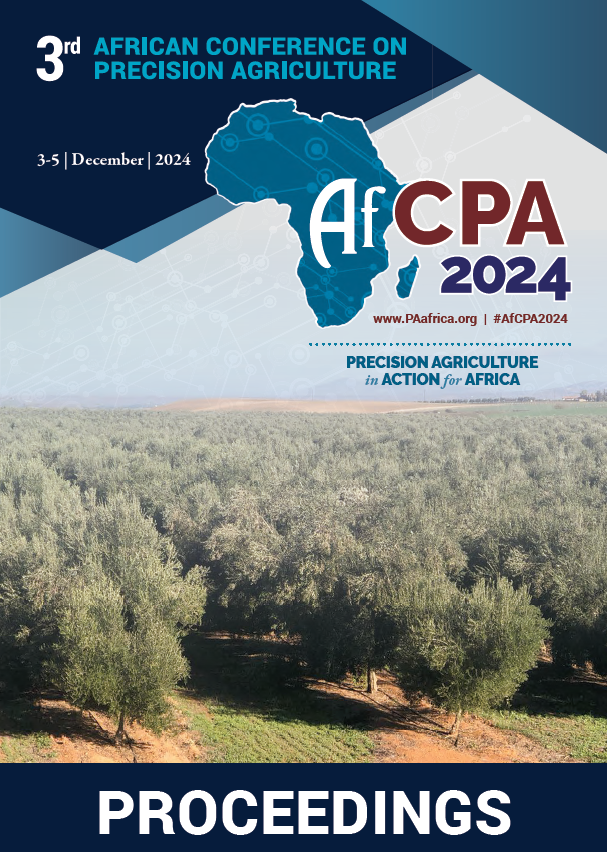Download the Conference Proceedings
Proceedings
Authors
| Filter results2 paper(s) found. |
|---|
1. QUANTIFICATION OF OPTIMAL FERTILIZERS DEMAND IN WHEAT AND CORN FIELDS IN MOROCCO USING VERY HIGH-RESOLUTION REMOTE SENSED IMAGERY AND HYBRID COMPUTATIONAL APPROACHESAbstract. Demand on agricultural products is increasing as population continues to grow. Data driven management of macronutrients (i.e., nitrogen (N), phosphorus (P) and potassium (K)) and crops are of critical prominence to get the most out of soil in terms of crop yield while preserving environment. This study aims to establish a quantitative framework for macronutrient (i.e., nitrogen, phosphorus, and potassium) status (i.e., excess, deficiency) for winter wheat (Triticum aestivum... K. Misbah, A. Laamrani, A. Chehbouni , D. Dhiba , J. Ezzahar, K. Khechba |
2. The Yield Gap In Africa: Closing the gap through soil attributes management using remote sensing & Precision Agriculture Approaches at the field scaleIn Africa, which has the most population growth in the world, the agricultural system is characterized by the predominance of smallhoder farmers. In order to cope with intense population growth and increased production costs through yield gap closing. Yield gap is defined as the difference between potential yield and actual yield and is an inevitable method to improve yields while decreasing the environmental impacts of agricultural systems. The variability of yields is strongly controlled by... K. Khechba, A. Laamrani, A. Chehbouni, D. Dhiba, K. Misbah |
